 W
WThe Australian marbled catshark is a catshark of the family Scyliorhinidae, found in the eastern Indian Ocean, endemic to Western Australia between latitudes 12° S and 21° S, from the surface to 245 m (800 ft). Its length is up to 60 cm (24 in) and it typically inhabits coastal waters with sandy or rocky bottoms.
 W
WThe bigeye houndshark is a species of houndshark, belonging to the family Triakidae. It is found in the deep waters of the continental shelves in the western Indian Ocean, from the Red Sea to southwestern India, between latitudes 30° N and 10° N, at depths between 110 and 2,200 m. Its length is up to 37 cm.
 W
WThe blacktip tope, also known as pencil shark or blacktip topeshark, is a houndshark of the family Triakidae, and the only member of the genus Hypogaleus. It is found in the deep waters of the continental shelf in the Indo-West Pacific, from East Africa to Japan, at depths between 40 and 230 m. It can grow up to a length of 1.27 m.
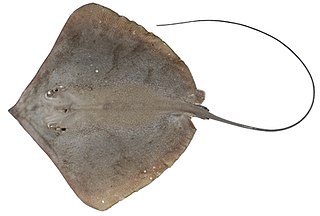 W
WThe brown whipray is a species of stingray in the family Dasyatidae, common in inshore, muddy habitats along the northern coast of Australia. It has often been confused in literature for the honeycomb stingray and the black-spotted whipray, which until recently was thought to be the same species. This species has an angular, diamond-shaped pectoral fin disc and a long, very thin tail without fin folds. It is plain brown above, sometimes with white dots or flecks near the edge of the disc, and white below; the tail is dark all over, with alternating dark and light bands near the tip. The maximum recorded disc width is 74 cm (29 in).
 W
WChaetodon plebeius, commonly known as the Gardiner's butterflyfish is a fish native to the Indian Ocean.
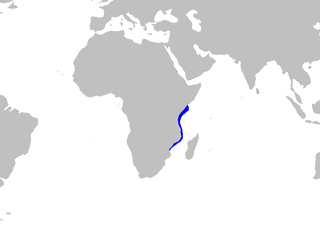 W
WThe crying Izak is a very rare catshark of the family Scyliorhinidae. It is found in the western Indian Ocean off Mozambique and Tanzania, at depths of between 600 and 660 m. It can grow up to 38 cm in length.
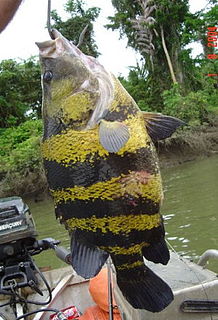 W
WDatnioides campbelli, the New Guinea tiger perch, New Guinea tigerfish or Campbell's tigerfish, is a species of datnioidid fish that is native to both fresh and brackish waters in rivers, swamps and tidal creeks in southern New Guinea, ranging from Lorentz River in Indonesia to Kikori River in Papua New Guinea. This predatory fish reaches up to 35 cm (14 in) in standard length.
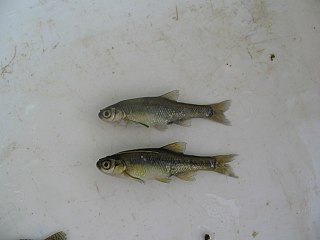 W
WThe epiros minnow is a species of cyprinid fish.
 W
WLinophryne algibarbata is a leftvent sea devil in the genus Linophryne that lives in waters between 400–2,200 metres (1,300–7,200 ft) in the North Atlantic Ocean.
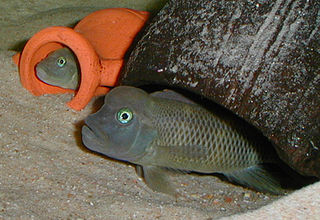 W
WThe lionhead cichlid, also known as African blockhead, buffalohead, humphead cichlid, lionhead or lumphead is a species of rheophilic cichlid native to Pool Malebo and the Congo River. It uses caves for spawning. This species can reach a length of 10 centimetres (3.9 in) TL. This species can also be found in the aquarium trade.
 W
WMacropinna microstoma is the only species of fish in the genus Macropinna, belonging to the Opisthoproctidae, the barreleye family. It is recognized for a highly unusual transparent, fluid-filled dome on its head, through which the lenses of its eyes can be seen. The eyes have a barrel shape and can be rotated to point either forward or straight up, looking through the fish's transparent dome. M. microstoma has a tiny mouth and most of its body is covered with large scales. The fish normally hangs nearly motionless in the water, at a depth of about 600 metres (2,000 ft) to 800 metres (2,600 ft), using its large fins for stability and with its eyes directed upward. In the low light conditions it is assumed the fish detects prey by its silhouette. MBARI researchers Bruce Robison and Kim Reisenbichler observed that when prey such as small fish and jellyfish are spotted, the eyes rotate like binoculars, facing forward as it turns its body from a horizontal to a vertical position to feed. Robison speculates that M. microstoma steals food from siphonophores.
 W
WMarleyella maldivensis is a flatfish of the family Pleuronectidae. It is a demersal fish that lives on saltwater bottoms at depths of up to 229 metres (751 ft) in the tropical waters around the Ari Atoll (Maldives) in the western Indian Ocean. It can grow up to 10.4 centimetres (4.1 in) in length.
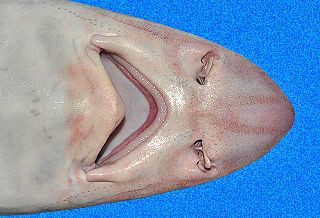 W
WThe narrowfin smooth-hound or Florida smooth-hound is a houndshark of the family Triakidae. It is found on the continental shelves of the subtropical western Atlantic, from Florida and the northern Gulf of Mexico to Venezuela, and also southern Brazil, between latitudes 32° N and 36° S, from the surface to a depth of 100 m. It can grow up to a length of 1.1 m.
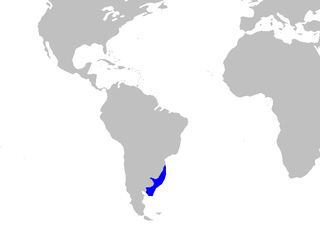 W
WThe narrownose smooth-hound is a houndshark of the family Triakidae. It is found on the continental shelves of the subtropical southwest Atlantic, from southern Brazil to northern Argentina, between latitudes 30° S and 44° S, at depths between 60 m to 195 m. It can reach a length of 74 centimeters.
 W
WThe northern wobbegong is a carpet shark in the family Orectolobidae, found in the western Pacific Ocean around Australia, between latitudes 9° S to 26° S. It reaches a length of 63 cm.
 W
WOdontomacrurus murrayi, the roundhead grenadier, is a bathypelagic or mesopelagic species of rattail. The fish is widespread in the mid-waters of the eastern Atlantic Ocean from north of the Azores to South Africa. It also occurs in the Indian Ocean and in the southwest Pacific. This species grows to a length of 64 centimetres (25 in) TL. The remains of fish have been sampled from the stomach contents of specimens. This species is the only member of its genus.
 W
WThe pitted stingray is a species of stingray in the family Dasyatidae, endemic to the waters around Japan and the Sea of Japan. It typically found near the coast at depths of 40–60 m (130–200 ft), but may also venture into the open sea. Measuring up to 1.2 m (3.9 ft) across, the pitted stingray has a diamond-shaped pectoral fin disc with a characteristic "W"-shaped groove on the underside. Other identifying characteristics of this species include its dark gray dorsal coloration with small white spots, and the presence of dorsal tubercles in adults. Pitted stingrays are caught as bycatch in coastal fisheries and brought to market. The International Union for Conservation of Nature (IUCN) does not yet have sufficient data to assess this species beyond Data Deficient.
 W
WThe Rosette skate is an abundant mid-depth skate.
 W
WThe slendertail lanternshark or Moller's lanternshark is a shark of the family Etmopteridae found in the western Indian Ocean between latitudes 34°N and 46°S at depths between 250 and 860 m. It can grow up to 46 cm in length.
 W
WThe southern sleeper shark or Whitley's sleeper shark is a deepwater benthopelagic sleeper shark of the family Somniosidae found in the southern Atlantic, Indian, and Pacific Oceans. It is known from depths of 400 to 1,100 m. Its length is up to 4.4 m (14 ft). It feeds primarily on cephalopods, especially squid and fish; its stomach contents also less commonly contain remains of marine mammals and birds. Based on its generally sluggish nature and the speed of its prey, it is thought to be an ambush predator. A 3.6 m (12 ft) long female caught off the coast of Chile had a whole southern right whale dolphin in its stomach. This dogfish is sometimes taken as bycatch in the orange roughy and Patagonian toothfish fisheries; whether this poses a threat to the species is currently unknown.
 W
WTelestes pleurobipunctatus is a species of ray-finned fish in the family Cyprinidae. It is found only in Greece. Its natural habitats are rivers and intermittent rivers. It is threatened by habitat loss.
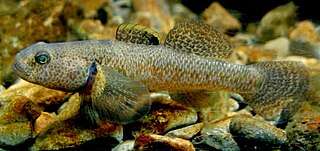 W
WThe upland bully is a species of fish in the family Eleotridae endemic to freshwater habitats in New Zealand. Both sexes have distinctive orange-brown dots all over the head. Adults generally reach a length of 8–10 cm (3.1–3.9 in).
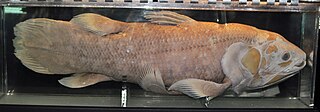 W
WThe West Indian Ocean coelacanth, sometimes known as gombessa, African coelacanth, or simply coelacanth, is one of two extant species of coelacanth, a rare order of vertebrates more closely related to lungfish and tetrapods than to the common ray-finned fishes. Latimeria chalumnae is a crossopterygian.
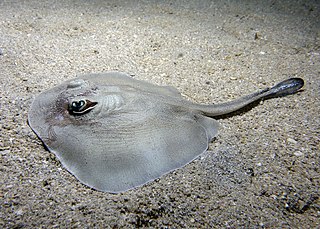 W
WThe western shovelnose stingaree is a common species of stingray in the family Urolophidae, inhabiting shallow sandy flats and seagrass beds off southwestern Australia from Perth to Gulf St Vincent. Growing to 37 cm (15 in) long, this small ray has a rounded pectoral fin disc and a blunt, broadly triangular snout. Its nostrils have enlarged lobes along the outer rims and a skirt-shaped curtain of skin between them with a strongly fringed posterior margin. Its tail ends in a lance-like caudal fin and lacks dorsal fins and lateral skin folds. This species is colored grayish to brownish above, sometimes with lighter and darker spots, and pale below, sometimes with darker marginal bands and blotches.
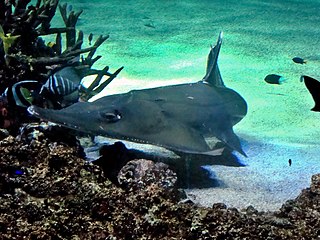 W
WRhynchobatus australiae, also called the white-spotted guitarfish, white-spotted wedgefish or bottlenose wedgefish, is a species of fish in the Rhinidae family. It is found from shallow waters to a depth of at least 60 m (200 ft) in the Indo-Pacific, ranging from the East African coast and the Red Sea, to Taiwan, the Philippines and Australia. It is part of a species complex that also includes the giant guitarfish, the broadnose wedgefish and possibly the smoothnose wedgefish.